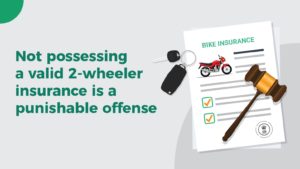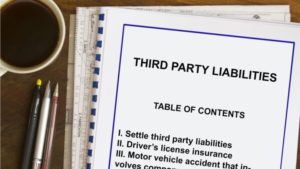
When you buy a comprehensive bike insurance policy, the coverage amount of the policy is called the Insured Declared Value (IDV). This value is calculated after deducting the depreciation of the bike from its market value. Depreciation of the bike is based on its age. The depreciation rate has been specified for calculation of IDV and it is as follows –
|
Age of your bike |
Applicable depreciation rate |
IDV (as a % of the bike’s market value) |
|
Up to 6 months |
5% |
95% |
|
More than 6 months but below one year |
15% |
85% |
|
More than a year but below 2 years |
20% |
80% |
|
More than 2 years but below 3 years |
30% |
70% |
|
More than 3 years but below 4 years |
40% |
60% |
|
More than 4 years but below 5 years |
50% |
50% |
For bikes that are aged more than 5 years, the IDV is calculated on a mutual agreement between you and the insurance company.
So, if the value of your bike is INR 80, 000 and you just drive it out of the showroom, the value, for insurance purposes would reduce by 5%!
Factors affecting the IDV
The IDV of your bike is affected by various factors. Let’s find out what these factors are –
- Age of the bike
This is an obvious factor. As your bike ages, its depreciation increases and, so, the IDV goes down. If you check the table, you would see the IDV gradually reducing with the age of the bike. So, for older bikes the IDV is lower compared to newer ones.
- The make, model and variant
Your bike’s make, model and variant (MMV) determines its market value. Different bikes are priced differently and so, when you buy bike insurance, the make and model of the bike is required to determine the IDV. Based on the MMV, the market value of the bike is determined and then the applicable depreciation is deducted to arrive at the IDV.
- Accessories added
If you add accessories to your bike, which are not factory fitted, the value of such accessories would be included in IDV calculation. In such cases, IDV would be calculated using the following formula –
IDV = (market value of the bike – age-based depreciation of the bike) + (market value of the accessories – depreciation on such accessories)
So, if you add accessories to the bike and intimate the insurance company about the same, the IDV would be increased.
- Underwriting policies of the insurer
Though there is a formula for calculating the IDV of the bike, you would find different insurance companies offering different IDV values when you compare bike insurance plans available in the market. This variation is because of the underwriting principles of the insurance company. Based on its underwriting policies, some insurers might offer you a higher IDV while others might restrict the coverage. You should, therefore, compare different bike insurance plans to find the IDVs offered by different insurance companies.
Choosing the IDV
Thankfully, you have the option to customize your bike’s IDV as per your requirement. You are allowed a maximum and minimum range of IDV and you can select the IDV within this range. You can also negotiate with the insurer to offer you the most optimal IDV in your bike insurance policy.
The IDV also determines the premium payable for the bike insurance plan. Higher the IDV, higher would be the premium that you would have to pay. That is why many individuals prefer a lower IDV so that their premium outgo is reduced. This, however, is a mistake. The IDV is the maximum claim liability that the insurer bears. If your bike is totalled or stolen, the IDV would be paid as claim under the bike insurance policy. In such cases, if your IDV is low, you would suffer a considerable financial loss.
So, for saving a few bucks on the premium payment, don’t compromise with the IDV. Do your IDV calculation using the above-mentioned factors and find out the most optimal IDV for your bike. Then, look for policies that offer the IDV closest to the optimal level and choose them. If there is a contingency, the claim payment would compensate you for the loss that you suffer.
Do a little homework when you buy bike insurance, especially when it comes to the policy’s IDV. Choose a suitable IDV so that your bike is insured at its actual value.

 Know About Car Insurance
Know About Car Insurance Compare Car Insurance
Compare Car Insurance Read Our Blogs
Read Our Blogs Find Advisor
Find Advisor Know About Bike Insurance
Know About Bike Insurance Know About Health Insurance
Know About Health Insurance Know About Life Insurance
Know About Life Insurance






